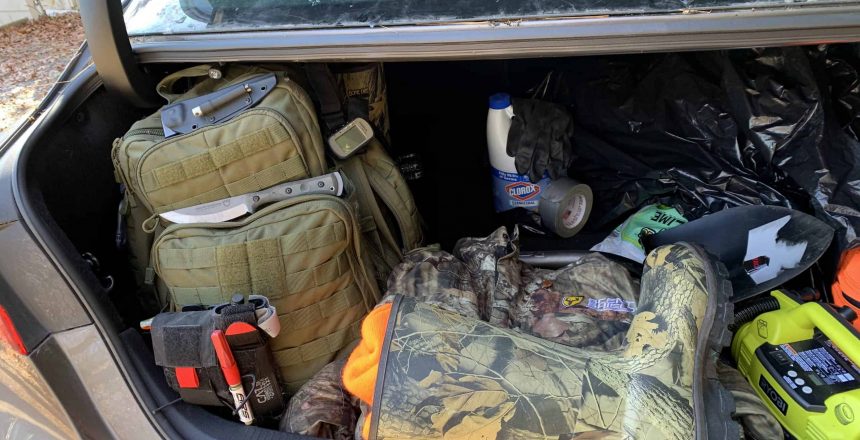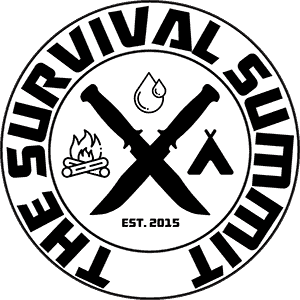Emergency cold-weather vehicle kit

It’s that time of the year again, do you have your emergency cold weather kit ready? If you live in a part of the world that is affected by winter weather and freezing conditions, you should be prepared in an emergency while you’re away from home.
We always recommend keeping a cold-weather survival kit in your vehicle. This type of kit is meant for a short-term emergency if you happen to get stranding while traveling, especially in rural areas. You may need to travel on foot to get help or stay in your vehicle for an extended period.
Below is a bullet list of some recommended items for your Emergency Cold Weather kit.
- Always keep a pad of paper and a pen, preferably a fisher space pen, so you can leave a note if you must abandon your vehicle telling people the direction you’re traveling in as well as any other important information. You can also make an imprint of the pattern on the bottom of your boots for tracking purposes to leave behind if your vehicle is found.
- Polypropylene thermal undershirt and pants. Do not wear 100% cotton as your base layer. “Cotton Kills” is an old saying because when cotton gets wet, it no longer has insulating properties because the air pockets in the fabric fill up with moisture and water. When you sweat, 100% cotton clothing will absorb your sweat like a sponge if it’s touching your skin. You will not have this issue when using polypropylene as your base layer. Keep in mind that hypothermia can occur in temperatures well above freezing.
- Wool blanket, extra winter jacket/parka, and bib pants, or a one-piece coverall. You can pick up coveralls that include removable hand muffs, a hood and handwarmer pockets. You should also keep a pair of wool socks, thermal gloves, and a wool hat. You may also want to consider carrying a few compact emergency mylar thermal blankets (space blankets)
- Local maps, a well-made compass and/or handheld GPS. These items are especially important if you’re traveling in an area that you are not familiar with. Do not rely on your cell phone for GPS as your battery may die at the worst possible moment. Pack extra batteries for any handheld GPS device.
- Keep a couple of MRE’s or emergency food rations in your kit. High-calorie emergency food rations may be best as they are able to withstand sub-zero weather conditions and you won’t have to take them out of your vehicle each day. Make sure you add some type of food rations to your emergency cold weather kit.
- Sawyer Mini water filter which can also be attached directly to your hydration line if you’re using a water bladder in your backpack.
- Shovel, jumper cables and road flares, of these road flares, can have a second use in an emergency cold weather kit, as you can use them to quickly start a fire to warm yourself.
- Water: You’re going to want to keep at least a gallon of water in your vehicle always, which can be tricky as you’d have to remove it during any nights that approach near-freezing temperatures. You’re better off keeping your entire kit in a large backpack with a 100 oz. removable water bladder so you’re not trying to lug around a gallon of water while traveling on foot. The 5.11 Rush 72 pack is plenty large enough. We would also highly recommend keeping a handful of Pedialyte advanced care powder packages. You simply mix the powder in your canteen or water bladder for maximum electrolytes.
- Single Wall Stainless Steel Water bottle/canteen. You’ll want single wall construction so that you can boil water in your bottle. A water bottle with a wide-mouth opening is also preferred.
- A well-made bushcraft knife and a Silky brand saw. These may come in handy if you’re stuck traveling for any longer than half a day as you may need to build a temporary shelter. We would also recommend keeping at least a 100’ of 550 paracord in your kit.
- A flashlight with extra batteries is a must-have for your emergency cold weather kit. We recommend Nitecore flashlights.
- Medical Kit: Having basic first aid as well as trauma gear is essential. I carry a full trauma kit that includes a CAT 7 Tourniquet, pressure dressings, combat gauze, chest seals, etc. This kit is only 7” X 3 ½” X 2 ½” and is very lightweight. Be sure your kit includes moleskins in case you get blisters on your feet. When it comes to emergency cold weather kits, old army blankets or thermal blankets are a necessary part of your medical kit.
- Fire starting kit: Typically, you’ll want a large Ferro rod and striker and char cloth or cotton balls soaked in Vaseline and/or other tinder. We recommend a 3/8 inch or thicker Ferro rod, not only will it last longer but will put off many more sparks. See the evidence here: Ferro Rod, Bigger is Better. There are so many fire starter and tinder options on the market, so be sure to do plenty of research and as always, please field test every survival item you own. You’re better off figuring out which items are not high quality prior to having to depend on them to save your life in a dangerous situation. I personally have a 6” X ½” long Ferro rod with a striker, which I purchased from Amazon, a tube of fire paste, a couple of packages of tinder and char cloth from various companies, and stormproof matches as my main kit. Another option for easy to carry tinder is called the firebug which is a cotton ball combined with petroleum jelly. We created a video showing how to make these: How to: Firebug
- Fitness is often overlooked in terms of Survival, and that is a big mistake. Being in good physical shape could mean the difference between life or death in many situations. If you’re are not in good shape you will not be able to travel very far and may succumb to the elements more quickly. Your mind and body play a critical role in survival. You can own every survival tool on the planet, but if your body and mind can’t keep up, you’re as good as dead.
Side Note: Not all kits are created equal… 😉
Help Us Spread the Word
Facebook
Twitter
LinkedIn


